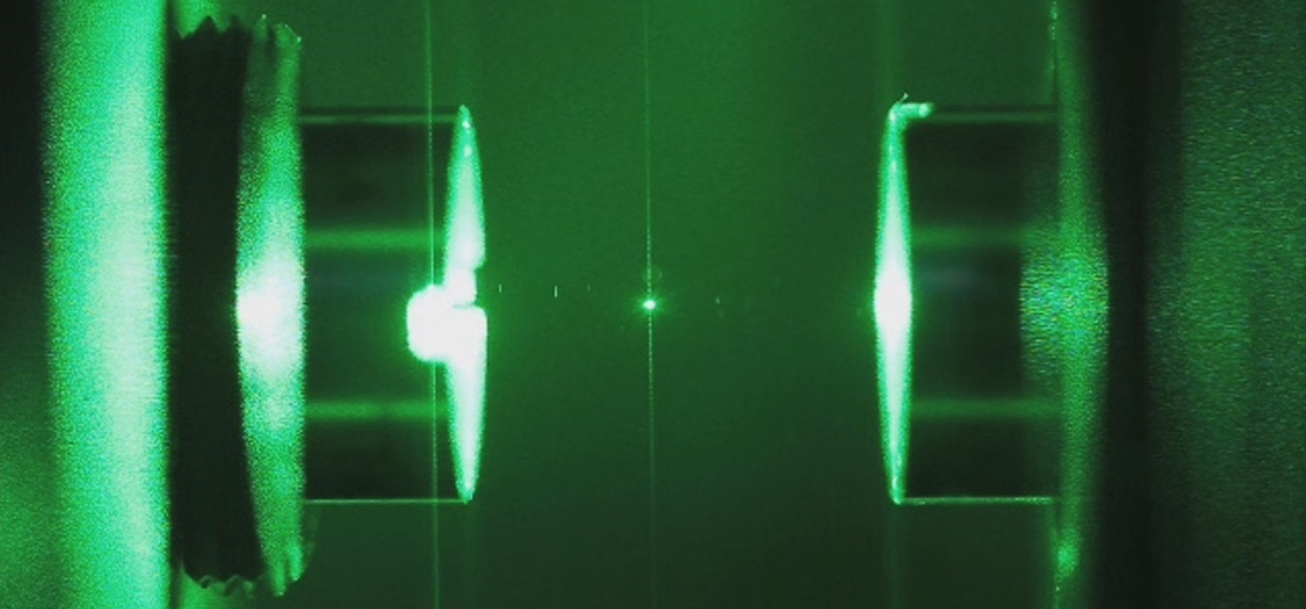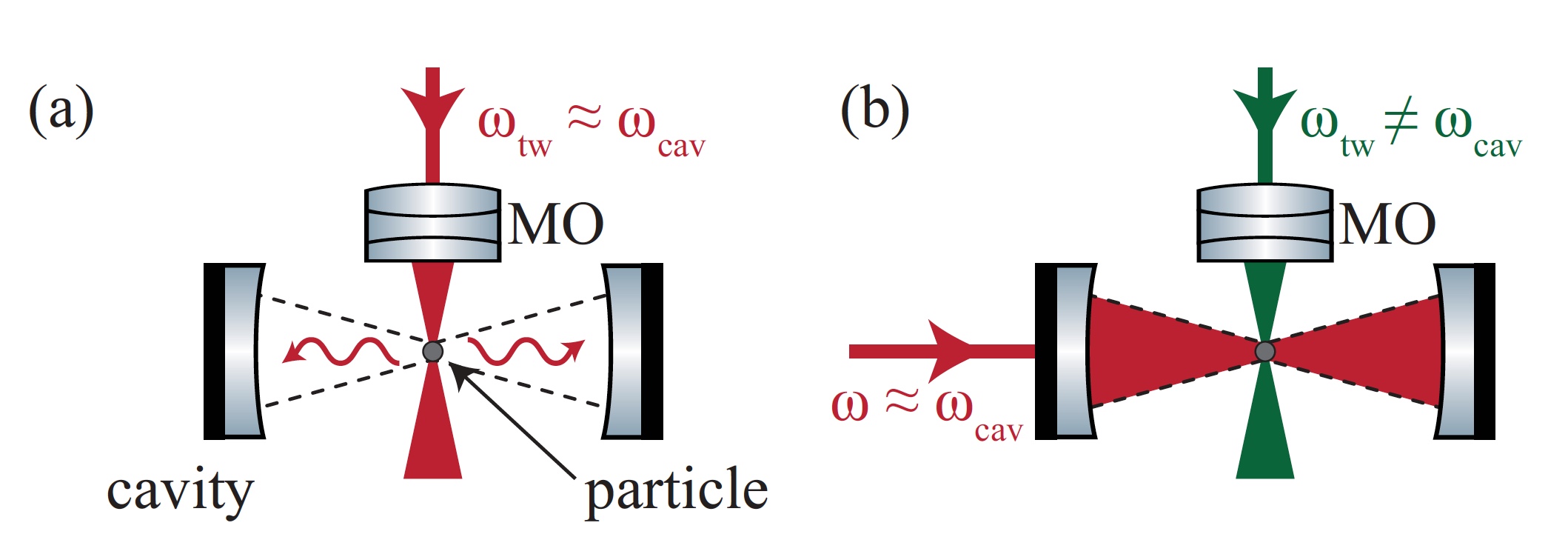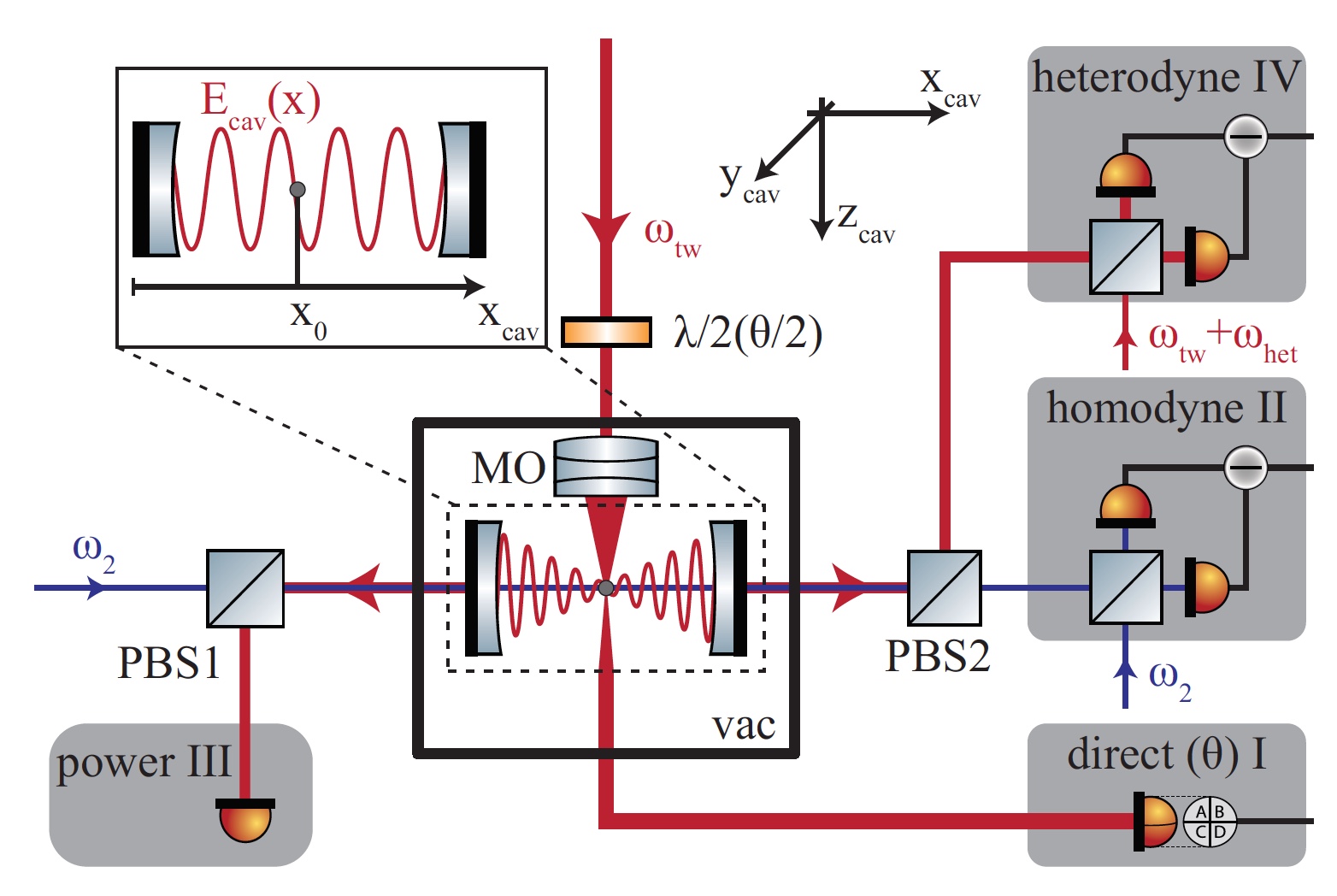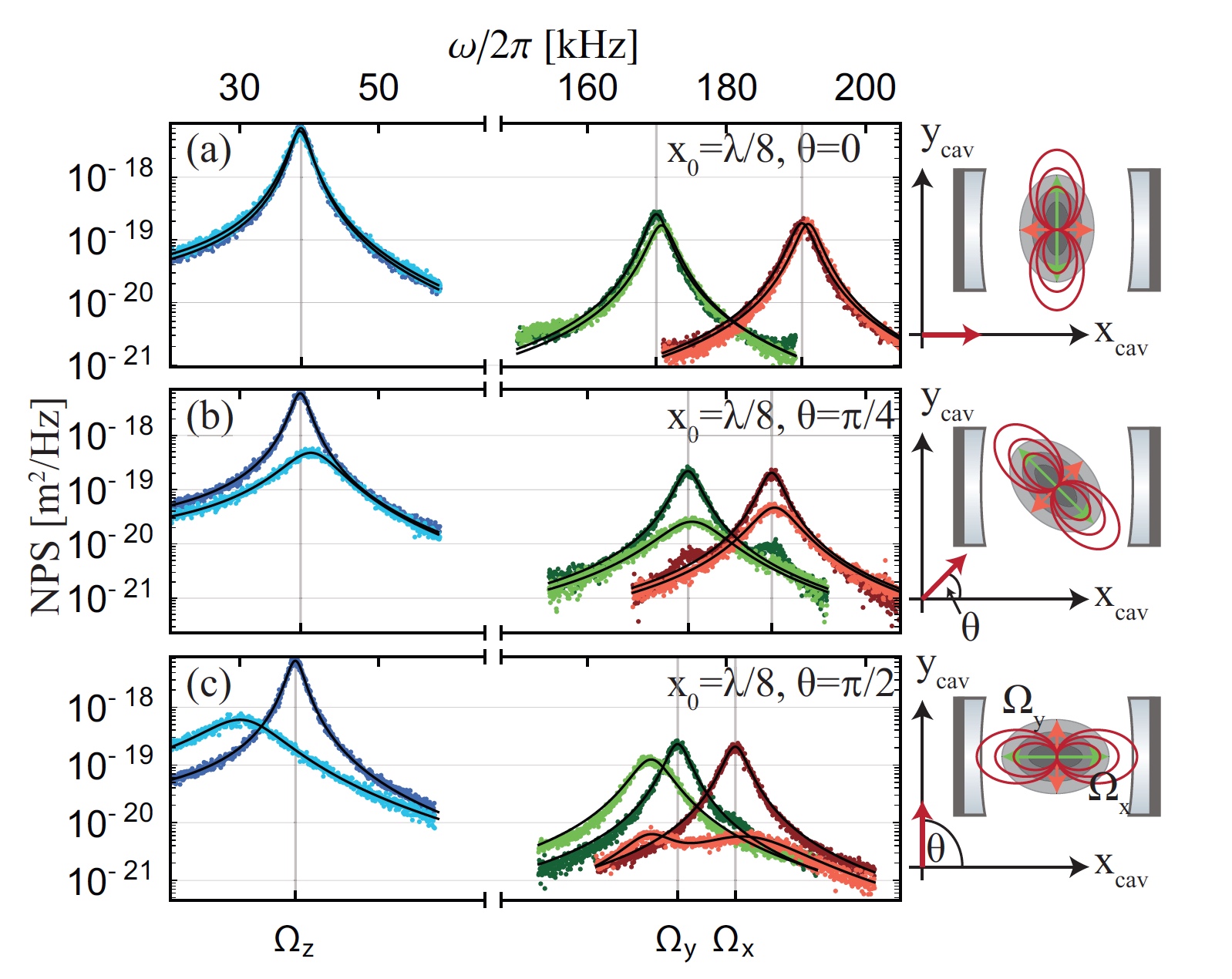Cooling of a levitating nanoparticle by means of an optical resonator

Spring is in full swing, the last snow has melted almost everywhere and the long-awaited warmth reigned. Heat-loving people are finally starting to take off their knitted sweaters, scarves and hats, and walruses are already in full swing in shorts and T-shirts. Meanwhile, a dog’s cold reigns in one of the laboratories of the University of Vienna, and scientists are extremely happy for this, because it is extremely difficult to study the quantum effects of nanoparticles in a different way. If without literary revolutions, then today we will get acquainted with the practical test of a new method of cooling a levitating nanoparticle by means of a trap from an optical resonator. Why and how did scientists freeze a nanoparticle to almost absolute zero, how effective is their method, and what can it bring to the study of quantum effects? We will find answers to these and other questions in the report of the research group. Go.
Experiment basis
Laser capture of particles and their cooling is one of the very popular tools in atomic physics, as the scientists themselves say, and it is difficult to disagree with them. If we omit all the super-duper complex formulations from which the hair will stand on end even where it doesn’t seem to exist, then the whole process can be described as follows: motor cooling of an atom or molecule is possible due to the complete rejection of the absorption of Doppler-shifted laser photons and subsequent spontaneous radiation. But this process depends on the internal structure of the cooled particle. This dependence can be avoided by combining the motion of the particle and the field of the optical resonator, which will result in a new cooling scheme.
Of great interest in research circles was the method of resonator cooling by means of coherent scattering of the field of an optical trap. In such a situation, a controlled dipole produces scattering that is coherent with the field of excitation. The scattering of photons in an initially empty optical resonator provides a new method of cooling. If you apply the correct laser detuning of the excitation field from the resonator, then you can resonantly enhance the scattering process, which in turn eliminates the energy from the movement of particles. It is the removal of this energy that is cooling.

Image No. 1: two options for resonant cooling of a levitating particle.
On image 1aIt is shown that resonant cooling by means of coherent scattering from optical traps (sometimes “tweezers”) is based on dipole radiation emitted into an empty optical resonator.
Image 1b - in standard dispersive optomechanics, an external laser controls both the resonator and scattering. Optimal cooling is possible with the largest intensity gradient of the resonator mode.
In their work, scientists demonstrated the practical implementation of resonant cooling of a levitating nanoparticle by means of coherent scattering. At the same time, scientists managed to carry out this process in three directions of thermal motion, whereas previously such experiments were successfully carried out in only one direction and only with atoms as subjects.
Theoretical base
Who loves beautiful formulas that resemble grandma’s lace, now we’ll consider a couple of these.

Image No. 2: resonant cooling by coherent scattering.
An optical trap is formed by a laser with a frequency ω tω , which is focused by a microscope objective ( OM ) into a vacuum chamber ( vac ). The nanoparticle levitates at the center of the Fabry — Perot resonator. A weak blocking beam is extracted from the capture laser and resonatorly controls the optical resonator at a frequency of ω 2 , allowing stable fixation of ω tω and ω 2relative to the frequency of the optical resonator. The PBS in the image above is the polarization beam splitter, and ω het is the local oscillator demodulation frequency.
Now consider a nanoparticle caught by laser tweezers with the necks of the beam (W x; y , the narrowest part of the laser beam) inside an empty optical cavity with a mode volume V cav (beam mouth w 0 ) and at position x 0 along the cavity axis (image No. 2 )
In this case, the interaction between the induced dipole and the internal (local) electric field can be described as the following Hamiltonian:

Designations:
E tw and E cav- electric fields of the tweezers and resonator modes;
ω tw is the frequency of the tweezers;
ω cav is the resonator frequency;
⍺ is the polarizability of particles;
â † and â- resonator field operators;
⍷ 0 is the electric constant;
c is the speed of light;
k is the wave number;
zR - Rayleigh length.
When the frequency of the tweezers approaches the resonance of the optical resonator, the density of the resonator mode can change the radiation spectrum of the dipole, which leads to resonantly amplified coherent scattering.
Such scattering has several distinguishing features. First, due to the directivity of the scattered dipole radiation, the interaction force is very dependent on the polarization of the trapping laser. Secondly, this interaction will be enhanced in parallel with the field strength of both the optical trap and the resonator. Thirdly, the interaction in the electric field of the resonator is linear.
Practical implementation
As we can see from the diagram in image No. 2, the microscope objective and the Fabry – Perot resonator are located inside the vacuum chamber. The lens focuses a 1064 nm laser on the neck of W x 0.67 μm and W y 0.77 μm, forming an optical tweezers (trap) that captures a quartz nanosphere 71.5 nm in diameter. The trap is elliptical in the transverse plane with non-degenerate mechanical frequencies (Ωx, Ωy, Ωz) / 2Π = (190, 170, 38) kHz. The lens itself is mounted on a three-axis nanopositioner in increments of 8 nm. To control the detuning between the frequencies of the laser and the resonator, part of the light is shifted in frequency ω 2 = ω cav-FSR-Δ and weakly pumps the optical resonator. This provides a latching signal that allows the laser source for optical tweezers to follow the free-drifting Fabry-Perot cavity.
There are 4 detection / detection channels (I-IV) in the experimental setup. Directly detecting particle motion in all three directions (I) obtained by scattering of optical tweezers. Homogeneous detection of transmission of the fixing laser in the resonator (II), which allows optomechanical detection of the position along the axis of the resonator. This is necessary to align the particle relative to the cavity field without the need to rely on coherently scattered light. The power of coherently scattered photons in the optical resonator (III) was also measured, while simultaneously tracking the field leakage from the left mirror of the resonator. The fourth (IV) detection is the detection of radiation from the right mirror of the resonator due to the spectrally resolved characteristic of the photons.
Coherent scattering strongly depends on the polarization of the optical tweezers. Scientists analyzed three scattering options for the following linear polarization angles: θ = 0, θ = π / 4 and θ = π / 2.

Image No. 3
First, the polarization of the trapping laser was established along the axis of the cavity (i.e., θ = 0), minimizing scattering in the empty cavity mode ( 3a ). For perfect alignment of polarizations, it is necessary to achieve complete suppression of this scattering. Scientists managed to achieve 100-fold suppression, limited by alignment between the axes of the tweezers and the resonator. As a result, coherent scattering was obtained, which produced insignificant resonator cooling along the y and z axes.
When the polarization changed by θ = π / 4, scientists observed three-dimensional (along all axes of thermal motion) cooling by means of coherent scattering ( 3b ). This effect is lost upon the transition to the polarization θ = π / 2. In this case, a good, but still weak, cooling along the x and z axes was observed ( 3s ). The y axis did not show similar results, which is explained by a slightly elliptical form of polarization of the trap.
For a more detailed acquaintance with the theory and practice of this experiment, I strongly recommend that you look into the report of the research group .
Epilogue
Summarizing the above, we can summarize. A nanoparticle in optical tweezers is, so to speak, a light scatterer in all directions. If this particle is placed inside the optical resonator, then part of this light can be stored between its mirrors. Thus, the photons will scatter into the cavity. If you use light whose photon energy is less than necessary, then the nanoparticle will give part of the kinetic energy so that the photons can be scattered inside the resonator. A decrease in the kinetic energy inside the particle leads to its cooling.
One of the authors of this study, Vladan Vuletich, already conducted similar experiments, but then good results were achieved only with the use of atoms and only along one axis of thermal motion.
This method, according to the researchers, will allow a much more detailed study of the quantum properties of various nanoparticles, thereby expanding our knowledge and general understanding of the quantum world and its sometimes strange and confusing laws.
Thank you for your attention, remain curious and have a good working week, guys.
Thank you for staying with us. Do you like our articles? Want to see more interesting materials? Support us by placing an order or recommending it to your friends, a 30% discount for Habr users on a unique analogue of entry-level servers that we invented for you: The whole truth about VPS (KVM) E5-2650 v4 (6 Cores) 10GB DDR4 240GB SSD 1Gbps from $ 20 or how to divide the server? (options are available with RAID1 and RAID10, up to 24 cores and up to 40GB DDR4).
VPS (KVM) E5-2650 v4 (6 Cores) 10GB DDR4 240GB SSD 1Gbps until the summer for free when paying for a period of six months, you can order here .
Dell R730xd 2 times cheaper? Only we have 2 x Intel Dodeca-Core Xeon E5-2650v4 128GB DDR4 6x480GB SSD 1Gbps 100 TV from $ 249 in the Netherlands and the USA! Read about How to Build Infrastructure Bldg. class c using Dell R730xd E5-2650 v4 servers costing 9,000 euros for a penny?
